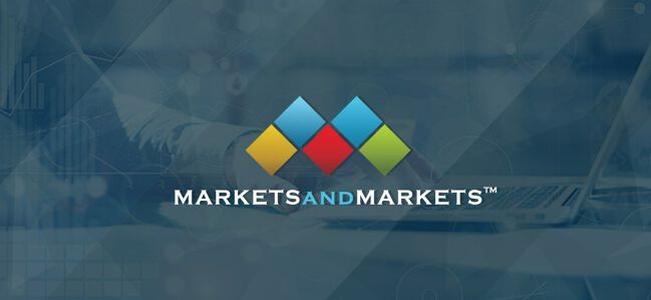As the global economy becomes more reliant on precision-driven operations and compliance-intensive sectors, temperature monitoring systems are no longer optional—they are mission-critical. From safeguarding pharmaceutical supply chains to ensuring semiconductor manufacturing stability, these systems are redefining operational resilience and product integrity. But what’s driving this shift? And how can business leaders leverage the opportunities this transformation presents?
What Is the Market Outlook for Temperature Monitoring Systems?
The global temperature monitoring systems market is expected to surge from USD 4.15 billion in 2024 to USD 5.66 billion by 2030, at a CAGR of 5.3%. This steady growth reflects the increasing complexity of modern industries and the corresponding demand for high-accuracy, real-time environmental monitoring.
At the heart of this transformation are advanced technologies like thermocouples, temperature sensors, IoT, and AI that collectively enhance the accuracy, reliability, and automation of monitoring protocols across diverse sectors.
Why Is Demand for Temperature Monitoring Systems Accelerating?
- Expansion in Secondary Manufacturing
With rapid industrialization and the rise of Industry 4.0, sectors like pharmaceuticals, food processing, and chemicals require ultra-precise temperature control for quality assurance and regulatory compliance.
- Tightening Global Safety Standards
Regulations across cold chain logistics, healthcare, and semiconductor manufacturing have made real-time temperature visibility a non-negotiable requirement. Organizations that fail to comply risk both regulatory penalties and brand reputation damage.
- Rise of Thermocouples and Smart Sensors
Thermocouples and temperature sensors have become the backbone of digital temperature monitoring, offering high-speed data collection, durability in harsh environments, and compatibility with automated platforms. Their integration with wireless networks enables cloud-based analytics and remote monitoring, reducing manual errors and improving operational agility.
Who Are the Industry Leaders and What Are They Offering?
As of 2023, key players include:
- 3M, Cardinal Health, and Honeywell International Inc. (US)
- Koninklijke Philips N.V. (Netherlands)
- Siemens AG (Germany)
- Masimo, Toshiba (Japan)
- Geratherm Medical AG (Switzerland)
These companies are investing heavily in R&D and digital transformation, offering AI-enabled predictive systems, multi-sensor integration, and real-time dashboards tailored for industries such as healthcare, pharmaceuticals, semiconductors, energy, and food.
Where Are the Top Growth Segments Within the Market?
🔸 Monitoring Systems by Product Type
Among the product segments, monitoring systems (both analog and digital) are set to witness the highest growth. Their increasing integration into emerging economies and industrial-grade automation platforms reflects their central role in future-ready manufacturing.
🔸 Cold Storage Temperature Monitoring by Application
This application area is forecasted to dominate the market. Driving this is:
- Stricter cold chain compliance regulations
- Surge in biopharmaceuticals and temperature-sensitive vaccines
- Global expansion of cold storage infrastructure in regions like India, China, and the Middle East
🔸 Asia Pacific by Region
Asia Pacific is projected to record the highest CAGR through 2030. Countries like India, China, and Singapore are fueling this momentum through:
- Biotech and pharma sector expansion
- Introduction of stringent regulatory frameworks
- Government investments in food safety and semiconductor manufacturing
How Are Technologies Like Thermocouples and AI Shaping the Market?
✔️ Thermocouples
These are rugged, fast-responding devices ideal for industrial-grade environments. Their broad temperature range and cost-effectiveness make them ideal for sectors like semiconductors, energy, and automotive.
✔️ Temperature Sensors
Smart temperature sensors embedded with IoT and machine learning algorithms allow predictive maintenance, anomaly detection, and trend analysis. These sensors are becoming indispensable in patient monitoring, server room management, and cold storage environments.
Together, these technologies are ushering in an era of connected ecosystems where data flows from the shop floor to executive dashboards in real time—empowering decision-makers with actionable intelligence.
When Should Enterprises Scale Their Investment?
The next 2–4 years will be crucial for organizations to transition from reactive compliance to proactive quality assurance. With increasing supply chain vulnerabilities, regulatory complexity, and climate sensitivity, deploying robust temperature monitoring infrastructure now is an investment in business continuity.
For pharmaceutical companies, temperature excursions can mean multimillion-dollar product losses and reputational damage. For data centers, even a 2–3 degree variance can impair server uptime. These high-stakes environments underscore the ROI potential of real-time monitoring.
What Should C-Suite Executives Do to Maximize ROI?
To future-proof their operations and unlock high ROI, executives should:
- Prioritize Infrastructure Modernization
Adopt next-gen monitoring systems with AI-enabled features and thermocouple-based accuracy across critical points in the value chain.
- Integrate Systems With Predictive Analytics
Leverage platforms that utilize temperature sensor data for predictive maintenance and risk forecasting.
- Ensure Cross-Industry Compliance
Align temperature monitoring systems with global standards like FDA 21 CFR Part 11, EU GDP, and HACCP to reduce audit risks.
- Build Data-Driven Culture
Train operational teams to interpret insights from smart dashboards and take real-time decisions based on environmental anomalies.
Final Thought: Is Temperature the New KPI for Operational Excellence?
Temperature may seem like a simple metric, but in today’s data-centric world, it is emerging as a key performance indicator (KPI) for product integrity, patient safety, and asset reliability. Whether through thermocouples in semiconductor fabs or temperature sensors in vaccine logistics, real-time monitoring delivers measurable returns in compliance, efficiency, and customer trust.
As we look toward 2030, temperature monitoring systems will not just support operations—they will define them.
For more information, Inquire Now!

